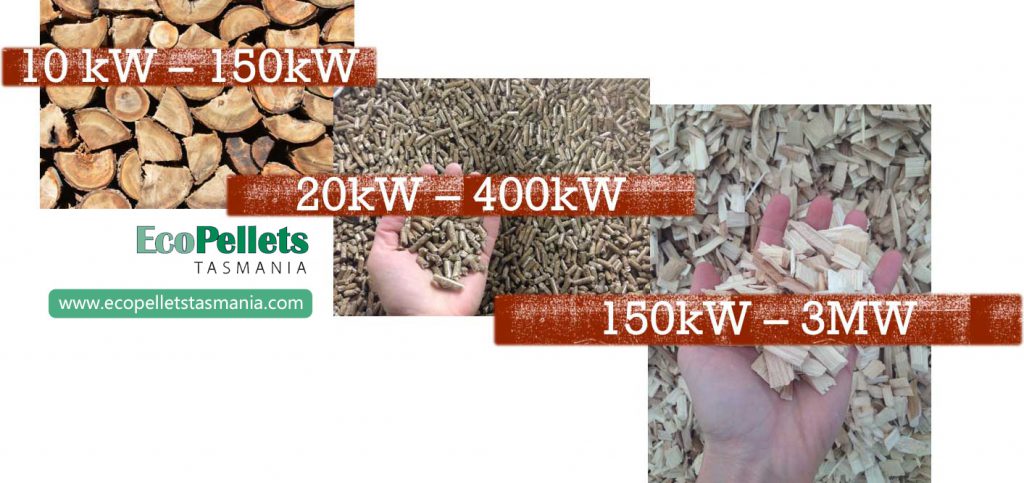Wood comes in many forms, species, sizes and origins. Let’s simplify the discussion to just the three wood mainstays: wood chips, wood pellets and logwood (firewood).
Each fuel type can be used only within a range of heat demand as shown in the graphic below. If you are working in BTU’s, then 1KW = 3,412 BTU.

Wood pellets are amazing. They are made to meet specifications and are very controlled, you always know what you’re getting because your supplier can provide consistent quality testing results. They are the densest form of wood fuel at 650 kg/cubic meter. They can be moved through automated pneumatic and auger systems and they can be stored easily and for a long time. You can enjoy the cost savings and carbon neutral benefit of pellets without ever actually handling them. The drawback of pellets is that, unlike firewood, you have to buy them from a manufacturer,$12 For Each 15KG Bag,Still cheaper than propane, oil or electricity but not as cheap as wood chips.
Chips are the cheapest form of wood fuel that you can buy because they are easiest to produce in large quantities. You need a multi-million dollar pellet mill to make wood pellets but you just need a chipper to make wood chips. Because wood chips are bulky and don’t flow like pellets do, to use them for heating you need a robust fuel handling system which is why wood chips won’t work for smaller heat loads. If you’re looking for a wood chip heating option for your house, look at Wood Pellets, It will make you spend less money on heating in winter.
